SnailBlitz 2020: The Search for SLIME rain or shine
The results are in from SnailBlitz 2020. See our photo contest winners!
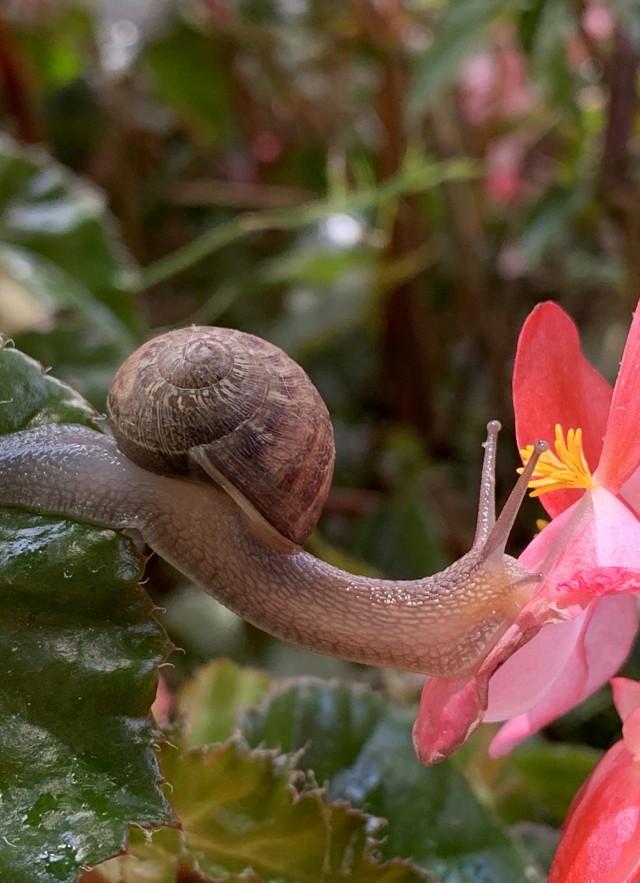
Over the last two months, hundreds of Southern Californians went on a massive snail and slug hunt! Searching high and low in their own backyards, sleuthing in their local neighborhoods, and — before the advent of “safer at home” — exploring their local parks, hiking trails, and other natural areas. Together we found thousands of snails and slugs, some of which were very rare indeed! Here are our collective results:
Observations: 2,340
Species: 49
Observers: 543
Identifiers: 126
Within these important records, at least three species were found outside of their normal locations, which shows range extensions and associated new county records for Southern California. Exciting!
As with every year, SnailBlitz 2020 is not only a crowd-sourced community science project, it is also a photo contest! Deciding the winners of the “best photo” categories was difficult as there were so many excellent images of our local snails and slugs. Without further ado, here are the winners with descriptions by SLIME project creator and Assistant Curator of Malacology, Jann Vendetti:
Grand Prize Winner
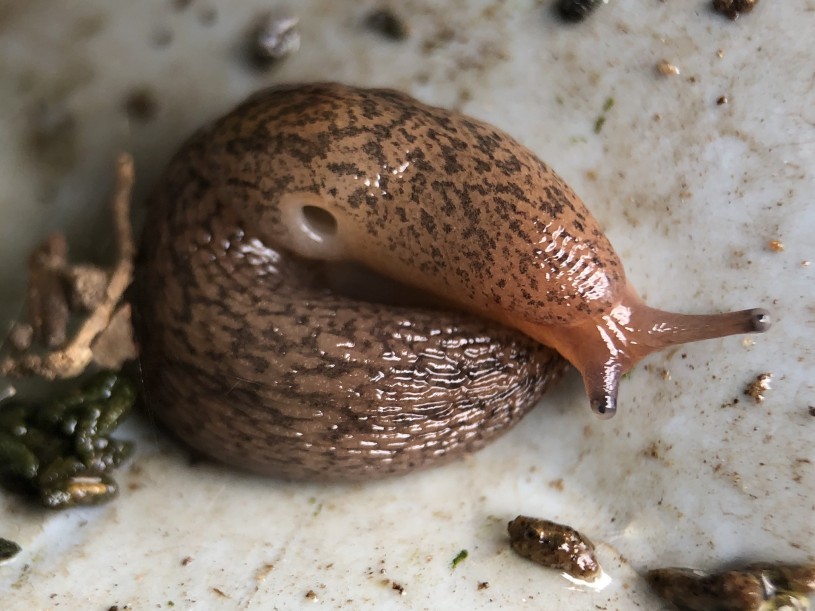
iNaturalist record: https://www.inaturalist.org/observations/40101249
Species: Ambigolimax sp.
Location: Los Angeles County
This photo is of one of the most common slugs in urban and disturbed environments in southern California. Technically though, we know only its genus (Ambigolimax), not its species. Until a few years ago, we were aware of only one species in this slug genus that lived in southern California, Ambigolimax valentianus. After surveying for slugs in urban Los Angeles because of the SLIME project, however, we discovered that there was a second species in this genus, Ambigolimax nyctelius, living in large numbers throughout the region. Both species are originally from Europe, but have become common in human-inhabited regions throughout the world.
The speckled body patterning in this year’s winning photo of Ambigolimax makes me think it is Ambigolimax nyctelius, however, to be sure we’d need to analyze its DNA or dissect it to examine its reproductive system. Both differences in DNA and reproductive characteristics are enough to determine whether it is Ambigolimax valentianus or Ambigolimax nyctelius. In the photo you can see clearly the eye stalks, with tiny black dots at their tips, the fingerprint-like texture of the mantle (the section of the slug behind the eye stalks), and the hole on the left side of the body called the pneumostome (Greek for “breathing hole”).
Best Snail Photo
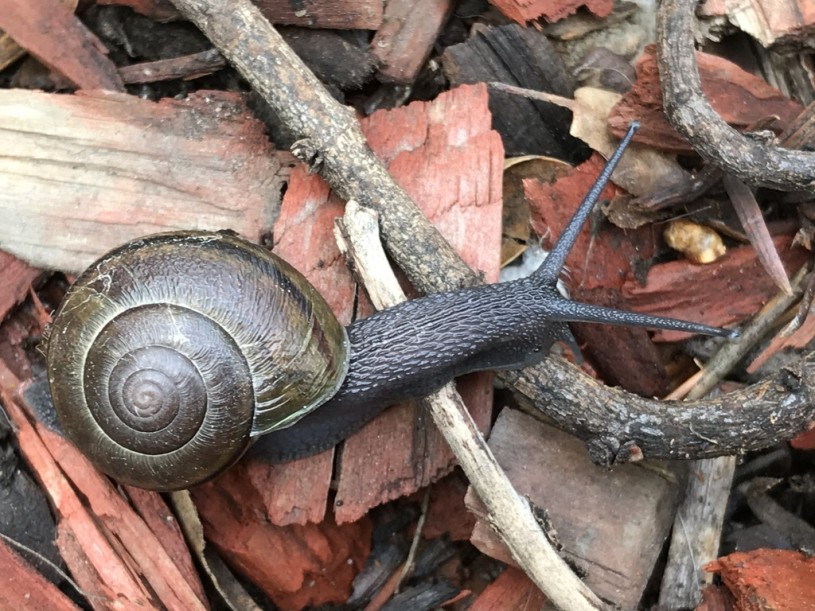
iNaturalist record: https://www.inaturalist.org/observations/40388825
Species: Helminthoglypta tudiculata
Location: Los Angeles County
This photo beautifully captures the shell and body characteristics of Helminthoglypta tudiculata, one of southern California’s most threatened native snails. This species lives in the local mountains and their foothills, in habitat with deep leaf litter and native forest. Collaborative research between NHMLA scientists and colleagues at nearby universities is currently determining species diversity within the Helminthoglypta genus, which is largely endemic to California and understudied.
The clarity of this year’s winning photo shows the dark, textured body and malleated amber-brown shell. These malleations make the shell of Helminthoglypta tudiculata, which is about the size of a quarter, look as if it has been dented by a very tiny hammer that has made hundreds of small divots in its surface. Locally, no other snail has this feature, though other members of the Helminthoglypta genus share the dark brown band on the shell, a trait that gives them their common name, “Shoulderband snails.”
Best Slug Photo
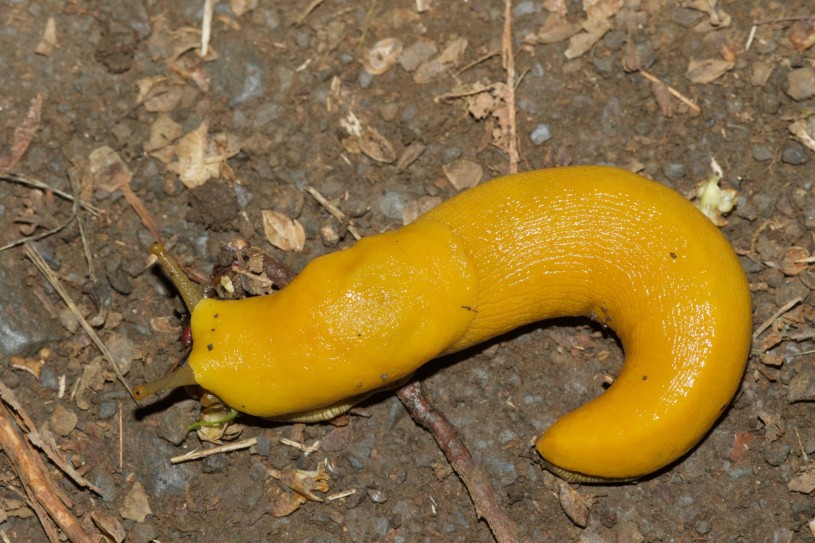
iNaturalist record: https://www.inaturalist.org/observations/38787598
Species: Ariolimax brachyphallus or Ariolimax stramineus
Location: San Luis Obispo County
This photo from San Luis Obispo County beautifully shows a bright yellow native California Banana slug. Banana slugs may be better known from central and northern California, but they are not uncommon in and around Santa Barbara and, rather astoundingly, are also found on Palomar Mountain in San Diego County. Though large and sometimes quite conspicuous, Banana slugs are not very well studied. Climate and habitat changes may also influence their ranges, which makes their documentation by users of iNaturalist particularly valuable to science.
Rarest Snail/Slug Photo
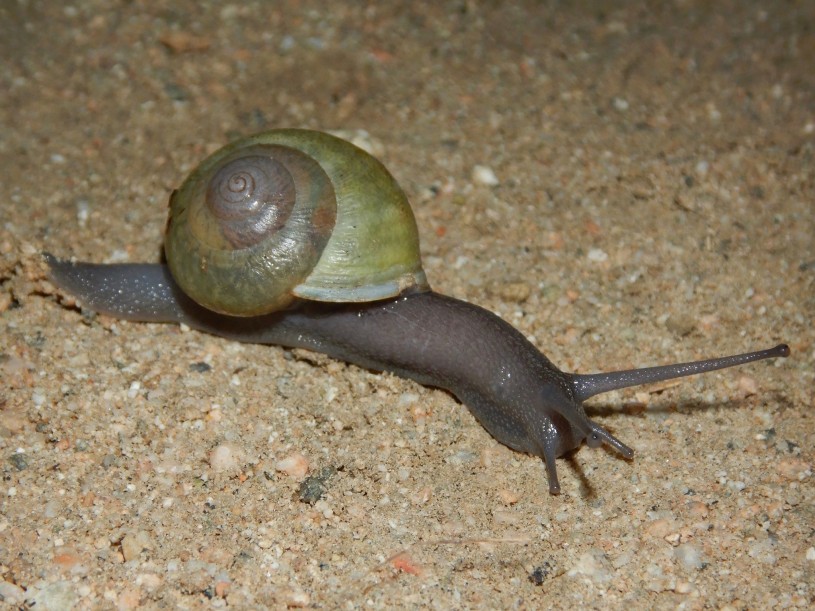
iNaturalist record: https://www.inaturalist.org/observations/39264726
Species: Helminthoglypta tudiculata
Location: Los Angeles County
The green shell color of this native Helminthoglypta tudiculata is an aberration––a genetic irregularity––as the shell would typically be brown. Interestingly, this green mutation has been observed before, but because we don’t know the population size of the species, we don’t know exactly how rare it is. Nonetheless, this observation is quite remarkable!
Thank you to this year’s contributors! We could not conduct our SLIME (Snails and slugs Living in Metropolitan Environments) research without the help of community scientists like you.
Today, and everyday, we celebrate your contributions. Let’s continue to make discoveries together.
#NatureinLA #CitizenScienceMonth
You can see all of the SnailBlitz 2020 observations here: SnailBlitz 2020 on iNaturalist.
To check out more snail and slug observations from our Natural History Museum of Los Angeles County SLIME project, visit our iNaturalist project.